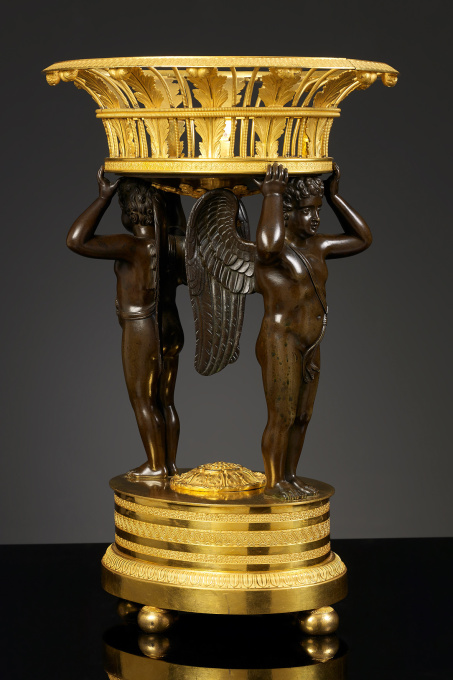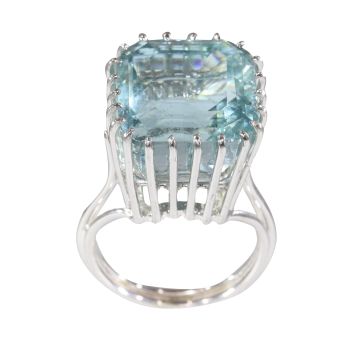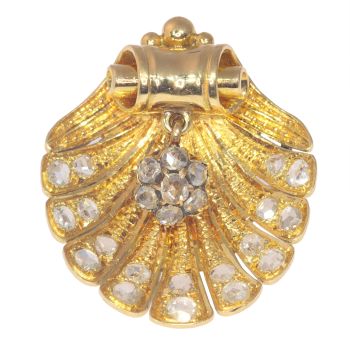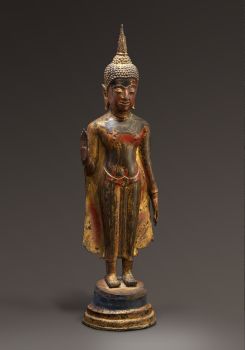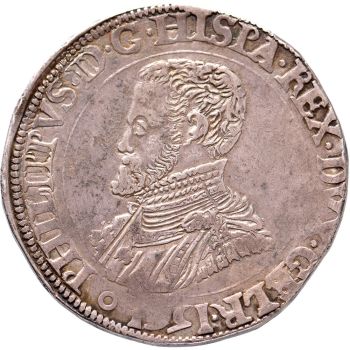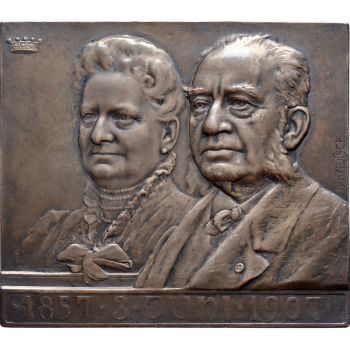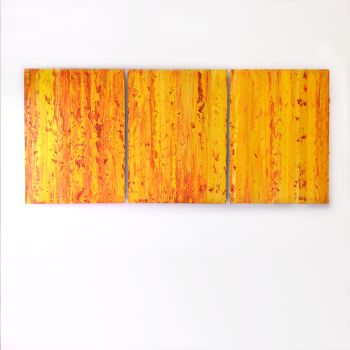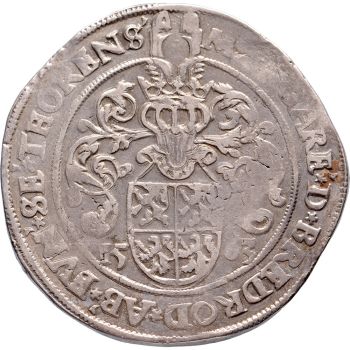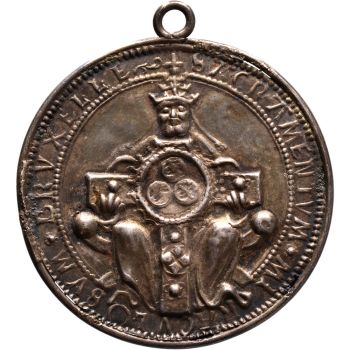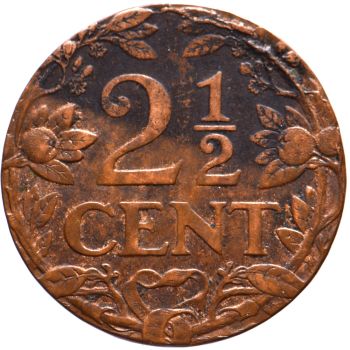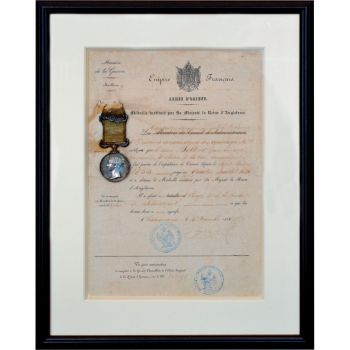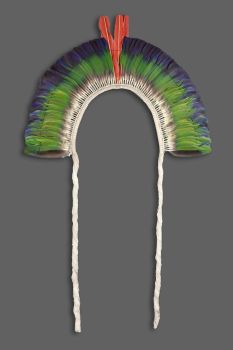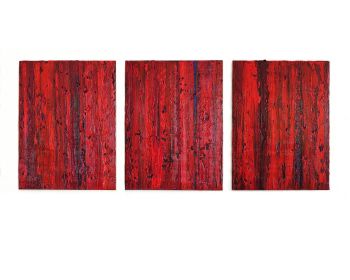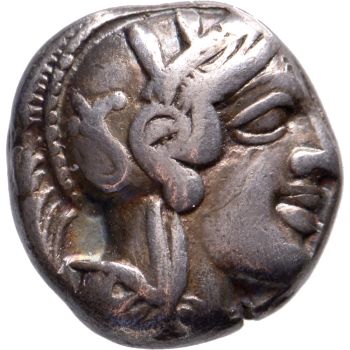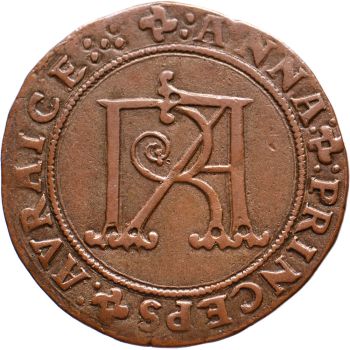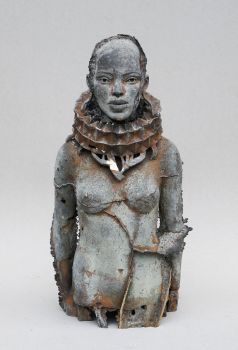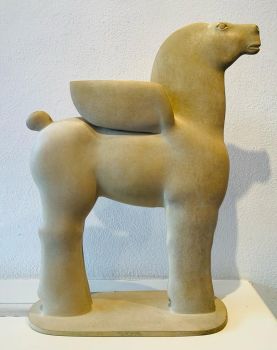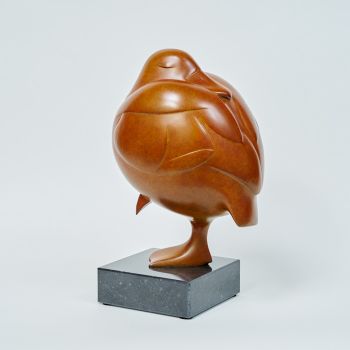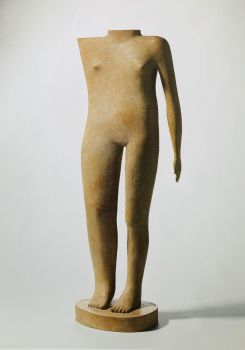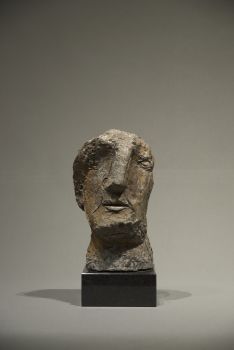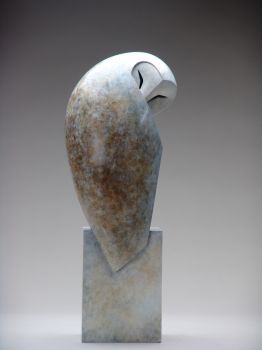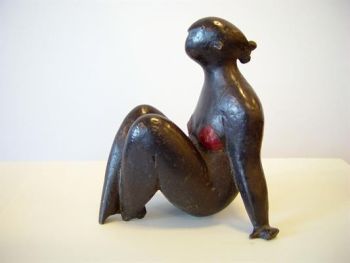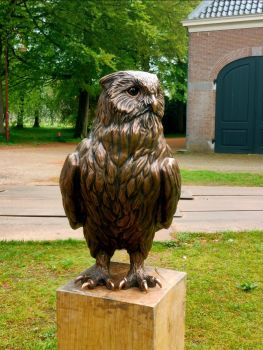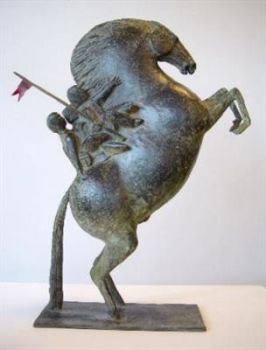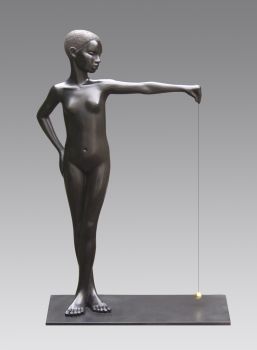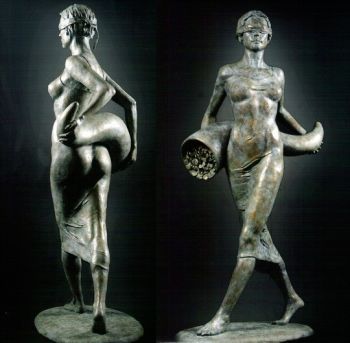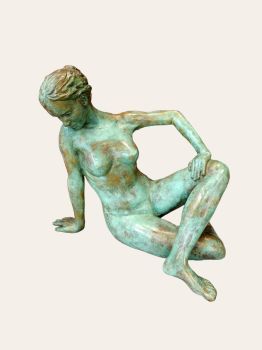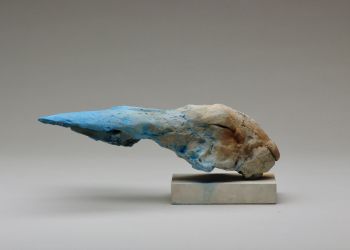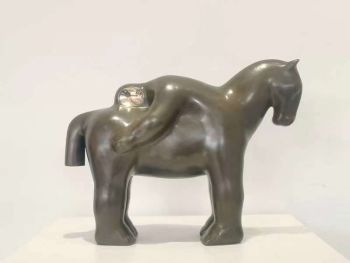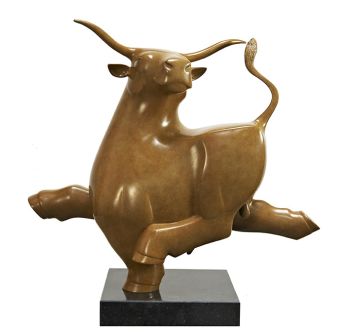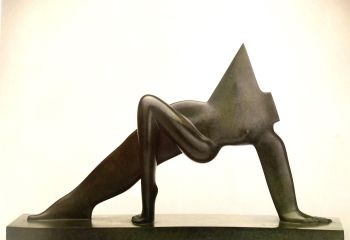A large Empire Center Piece, Paris 1810
Unknown artist
BronzeMetal
48 ⨯ 33 ⨯ 27 cm
Currently unavailable via Gallerease
- About the artworkA very large center piece in gilt and patinated bronze consisting of two patinated bronze putti on a oval shaped gilt bronze plinth on four oblate feet. The top of the plinth is decorated with a rosette of stylized acanthus leaves and a pommegranate centre. The putti carry an open work oval basket with stylized palmets and rope-shaped bars. The upper and lower rim are decorated with stylized floral motif. The underside of the basket consists of a patinated bronze plaque ornamented with gilt bronze palmettes and a glyphed boss decorated with leaves.
This magnificent centrepiece was almost certainly made as part of a ‘surtout de table’, an elaborate dining service, which in the early nineteenth century was displayed on a long mirrored plateau in the centre of a large dining table. This type of service was developed in France during the reign of Napoleon’s rule and in the wake of his various conquests was soon adopted throughout Europe. Pierre-Philippe Thomire (1751-1843), who was elected ciseleur de l’Empereur in 1809 in recognition of his service to Napoleon, created some of the very finest and most lavish surtouts for the Emperor and members of his Imperial court.
The centrepiece was intended to hold flowers or possibly fruit or sweets. A typical complete surtout de table may have comprised 24 and even 59 pieces which would probably have included smaller flanking centrepieces, tiered bon-bon dishes and sweetmeat plates, fruit baskets, possibly vases and accompanying candelabra placed on both the mirrored plateau and around its sides. While some remain as complete sets many have inevitably been separated, not least due to the practicalities of smaller dining tables. Despite separation, individual pieces are still very highly prized. - About the artist
It might happen that an artist or maker is unknown.
Some works are not to be determined by whom it is made or it is made by (a group of) craftsmen. Examples are statues from the Ancient Time, furniture, mirroirs, or signatures that are not clear or readible but as well some works are not signed at all.
As well you can find the following description:
•“Attributed to ….” In their opinion probably a work by the artist, at least in part
•“Studio of ….” or “Workshop of” In their opinion a work executed in the studio or workshop of the artist, possibly under his supervision
•“Circle of ….” In their opinion a work of the period of the artist showing his influence, closely associated with the artist but not necessarily his pupil
•“Style of ….” or “Follower of ….” In their opinion a work executed in the artist’s style but not necessarily by a pupil; may be contemporary or nearly contemporary
•“Manner of ….” In their opinion a work in the style of the artist but of a later date
•“After ….” In their opinion a copy (of any date) of a work of the artist
•“Signed…”, “Dated….” or “Inscribed” In their opinion the work has been signed/dated/inscribed by the artist. The addition of a question mark indicates an element of doubt
•"With signature ….”, “With date ….”, “With inscription….” or “Bears signature/date/inscription” in their opinion the signature/ date/ inscription has been added by someone other than the artist
Artwork details
Related artworks
- 1 - 4 / 12
Unknown artist
18th Century Diamond Bracelet with 2000-year-old Intaglios1790
€ 23.000Adin Fine Antique Jewellery
 Curated by
Curated byDanny Bree
Unknown artist
Set Franse Empire Pendules / Empire Lectura penduleearly 19th
Price on requestKuipers Kunst & Antiek
1 - 4 / 15Unknown artist
A JURUNA TRIBE FEATHER HEADDRESS1900 - 1950
Price on requestZebregs & Röell - Fine Art - Antiques
1 - 4 / 24- 1 - 4 / 24

